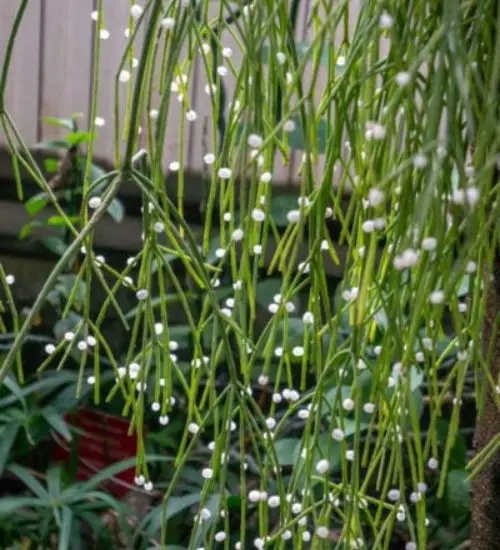Sun: Bright indoor light
Water: Typical water needs for a succulent
Temperature: Zone 9a from 20° F to 25° F (-6.7 ° C to -3.9° C) to Zone 11b from 45° F to 50° F (7.2° C to 10° C)
Winter Survival: Not cold hardy
Propagation: cuttings
Flower:
Flower Type: Yellow, white or cream
Toxic: Generally non-toxic to humans and animals
Dormant: winter
Space Requirement: Indoors & Outdoors
Common Problems: Plants may rot if overwatered
Where to buy Rhipsalis Sp?
Basc Care for Rhipsalis Sp
Watering
Regular watering period should be every 2 weeks
You can water your succulent more than often in extreme conditions but make sure that the soil is completely dry before watering your succulent again.
Fertilizing
Only feed this succulent during its active growing seasons which means winter. Use the right fertilizer applied in the right amounts. Applying half-strength balanced fertilizer every month or so is recommended for optimal results.
Do not fertilize during winter as the plant is dormant.
Sun & Location Requirements for "Rhipsalis Sp"
Rhipsalis Sp needs lots of sunshine! An ideal spot is near a window that gets direct sun for a few hours every day. If you don’t have natural sunlight indoors, consider investing in an LED grow-light to provide enough light for Rhipsalis Sp to stay healthy and vibrant.
Rhipsalis Sp is not cold hardy and does not survive in freezing conditions. However, there are certain strategies that can be used to help the plant thrive despite the chill of winter. Proper drainage and insulation are essential for succulent X during periods of extreme cold. Placing a layer of mulch or gravel on the soil around the plant can also help keep it warm.
Any succulents in the group will need a medium space to grow. You can place your pot at your table or window. Since this plant needs more space than mini succulents, you should consider do not plant them together with other succulents/plants.
Rhipsalis Sp also benefits from some indirect light throughout the day as well, so make sure you give it enough space to soak up light without becoming too exposed to heat.
Propagation
One way to propagate Rhipsalis Sp is by cutting
Toxicity

Rhipsalis Sp is not known to pose any significant health risks, as it is not considered to be toxic. However, it is best to keep the plant away from young children and pets, as they may ingest some of the parts of this plant that could contain toxins which can cause mild skin irritation.


